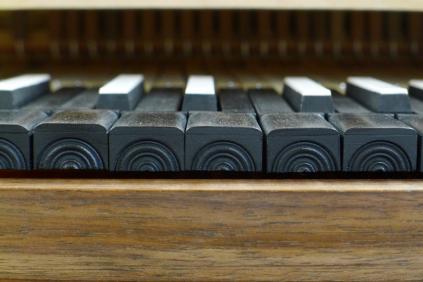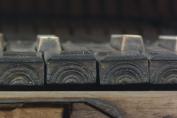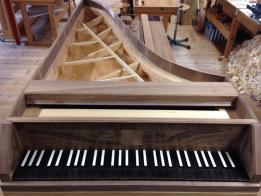grand piano (ascr. Franz Jacob Späth ca. 1770) Detail: key fronts
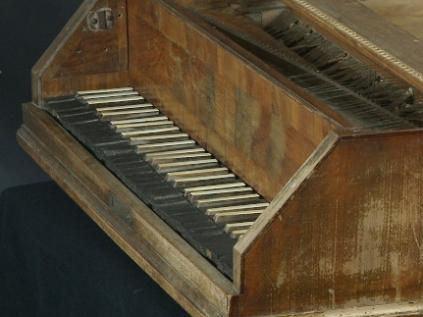
P.1:
Späth grand original, keyboard with bright upper (bone) and dark lower keys (top covers ebony, front blackened pear).
evidence: key fronts blackened pear (evident by visual examination under the microscope).
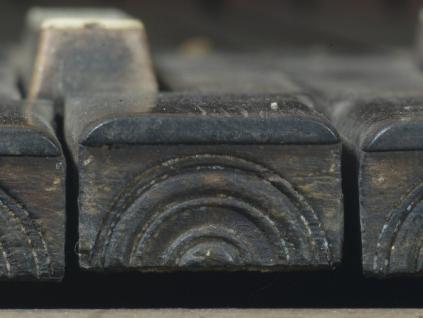
P. 2: Späth grand original, detail key fronts.
production hypothesis: profiles of the key fronts scraped/cut in circular movement with a turning tool. plates in full circle profiles subsequently halved.
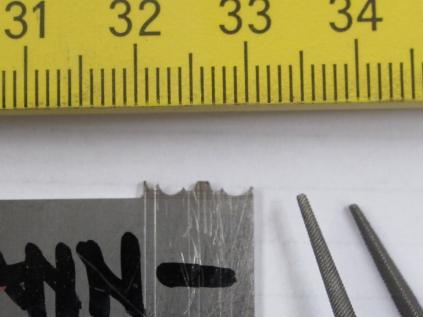
P. 3:
Making a matching turning tool by filing a matching profile into a card scraper.
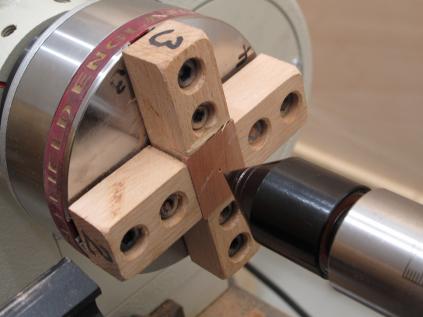
P. 4:
Initial material are honed pear boards honed (to 2 mms strength) and cut in length and width to approx. final dimensions. A specific four-jaw chuck is required. First step is the centering to assist the follwing centering of the grooved tool for scraping.

P. 5 Turning the profile with slight pressure
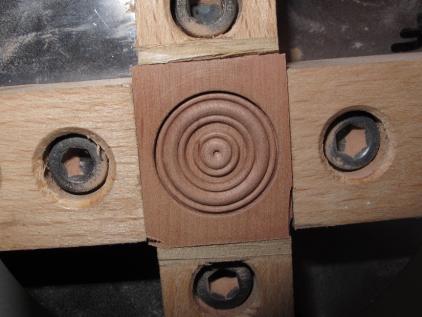
P. 6 Completed with full circle profiles
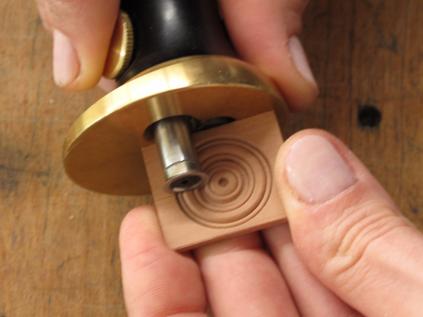
P. 7:
Marking the middle
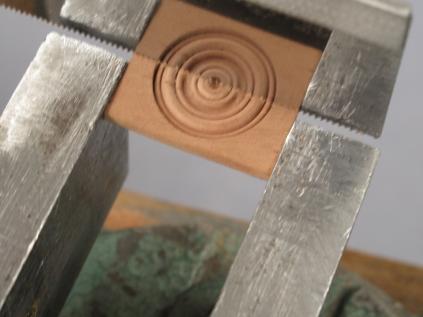
P. 8:
Cutting in half by saw, the sunk wood scribe mark used as guidance
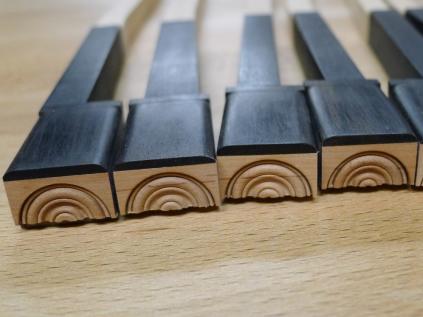
P. 9:
Halved key fronts after gluing to the keys. Individual adaption of the edge distance to the key top edge by filing.
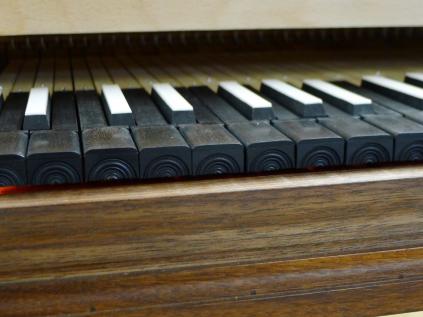
P. 10:
Key board after finishing blackening by iron gall ink/caseine based ink..
